My father, Frank J.
Carlisle, Jr., whose lifelong fascination with geology resulted in many lectures about basin and range country, alluvial fans, dikes, scarp and dip slopes as we drove across the country for childhood summer vacations. Edward Garnero, Phd., Professor, School of Earth and Space Exploration, Arizona State University, Tempe, AZ. Craig Daniel, (virtual) Lehigh Valley Museum of Natural History, Allentown, PA. Candace A. Sall, Associate Curator, Museum of Anthropology, University of Missouri, Columbus, Missouri. Robert Spomer, Buena Vista Gem Works.
A rock is lively

Snowflake Obsidian
bubbling like a pot of soup deep beneath the earths crust liguid molten boiling

Depending on what type of rock it is, a rock melts at temperatures between 1,300 and 2,400 degrees Fahrenheit (700 and 1,300 degrees Celsius).
A rock is mixed up.
All rocks are made of a mix of ingredients called minerals. Just as a batter of flour, butter, and sugar makes a cookie, a batter of minerals makes a rock. The recipe for a rock might include minerals like aluminum, copper, diamond, fluorite, gold, gypsum, lead, nickel, platinum, quartz, silver, sulfur, tin, topaz, and turquoise.

Calcite

Pyrite

Sodalite

Lazurite

Lapis Lazuli
A rock is galactic
Outer space is a shouer of rocky fireworks

METEOROIDS are rocks that range in size from a grain of sand to a basketball. They become meteors or shooting stars, when they streak through Earths atmosphere and vaporize.
Sometimes pieces of the meteor arent vaporized and land on Earths surface. These are called meteorites. COMETS are balls of rock and icesometimes called dirty snowballsthat are heated by the sun and soar through space, leaving glowing ribbons of dust behind them. ASTEROIDS are gigantic chunks of rocks and metal. They can weigh millions of tons. The largest known asteroid is 650 miles (1,050 kilometers) in diameter.
It would take a person 352 hours, or nearly 15 days, to walk around it.
A rock is old.
The oldest known rocks on Earth were formed billions of years before the sky turned from green to blue, before dinosaurs thundered across the earth, before humans learned how to make fire. The oldest rocks ever found are nearly 4.5 billion years old.

1. METERORITE FRAGMENTAlgeria, 4.4 billion years old 2. GREENSTONECanada, 4.28 billion years old 3.
ZIRCON CRYSTALAustralia, 4.1 billion years old 4. LEWISIAN GNEISSScotland, 3 billion years old 5. GRANITEUnited States, 2.5 billion years old
A rock is huge

Considered by many to be the worlds largest rock, Australias Mount Augustus is a sandstone rock with an elevation, or height, of 3,628 feet (1,106 meters) above sea levelabout 1,000 feet (305 meters) higher than the worlds tallest skyscraper.
and tiny
The carpets of sand on the floors and shores of oceans, lakes, and rivers come from larger rocks that have been ground, through weathering, into tiny grains.

A rock is helpful

Some birds swallow stones to help them digest food.

Crocodiles, seals, and sea lions also ingest rocks.

Crocodiles, seals, and sea lions also ingest rocks.
The extra weight, or ballast, helps them dive deeper and stay steady in water.  Sea otters lie on their backs and use rocks to crack open shells on their stomachs. Seagulls drop mollusks onto rocks to break apart their shells.
Sea otters lie on their backs and use rocks to crack open shells on their stomachs. Seagulls drop mollusks onto rocks to break apart their shells.  Chimpanzees and crows crack the hard shells of nuts on rocks.
Chimpanzees and crows crack the hard shells of nuts on rocks.
A rock is surprising
Some rocks need to be broken open to reveal their beauty. Geodesround, hollow rocks found mostly in deserts or beds of volcanic ashhide sparkly crystals.
The crystals were once liquids but, trapped inside rock for thousands of years, they changed into jewels of many colors. Agates, too, with their colorful layers created by liquid deposits, are often found in volcanic rock.  1. Amethyst Geode 2. Laguna Agate 3. Malachite and Azurite Geode 4.
1. Amethyst Geode 2. Laguna Agate 3. Malachite and Azurite Geode 4.
Septarian Geode 5. Azurite Geode 6. Chrysanthemum Rock 7. Watermelon Tourmaline 8. Blue Lace Agate 9. Idar-Oberstein Agate
A rock is inventive

Hammer,
France

Axe Head,
England


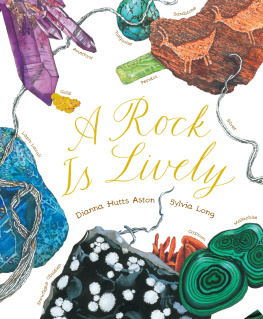

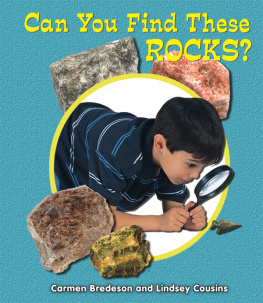
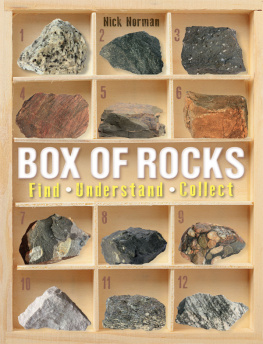

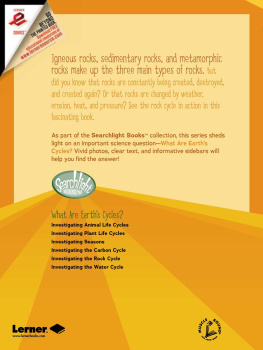
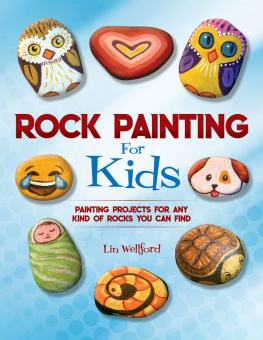

 Azurite Geode To Fox Carmody D. H. A. To Thomas Lyman Carlisle, MD, my genius brother, who had the coolest rock collection when we were kids. S.
Azurite Geode To Fox Carmody D. H. A. To Thomas Lyman Carlisle, MD, my genius brother, who had the coolest rock collection when we were kids. S. Snowflake Obsidian
Snowflake Obsidian  Depending on what type of rock it is, a rock melts at temperatures between 1,300 and 2,400 degrees Fahrenheit (700 and 1,300 degrees Celsius).
Depending on what type of rock it is, a rock melts at temperatures between 1,300 and 2,400 degrees Fahrenheit (700 and 1,300 degrees Celsius).  Calcite
Calcite  Pyrite
Pyrite  Sodalite
Sodalite  Lazurite
Lazurite  Lapis Lazuli
Lapis Lazuli  METEOROIDS are rocks that range in size from a grain of sand to a basketball. They become meteors or shooting stars, when they streak through Earths atmosphere and vaporize.
METEOROIDS are rocks that range in size from a grain of sand to a basketball. They become meteors or shooting stars, when they streak through Earths atmosphere and vaporize.  1. METERORITE FRAGMENTAlgeria, 4.4 billion years old 2. GREENSTONECanada, 4.28 billion years old 3.
1. METERORITE FRAGMENTAlgeria, 4.4 billion years old 2. GREENSTONECanada, 4.28 billion years old 3.  Considered by many to be the worlds largest rock, Australias Mount Augustus is a sandstone rock with an elevation, or height, of 3,628 feet (1,106 meters) above sea levelabout 1,000 feet (305 meters) higher than the worlds tallest skyscraper.
Considered by many to be the worlds largest rock, Australias Mount Augustus is a sandstone rock with an elevation, or height, of 3,628 feet (1,106 meters) above sea levelabout 1,000 feet (305 meters) higher than the worlds tallest skyscraper. 
 Some birds swallow stones to help them digest food.
Some birds swallow stones to help them digest food.  Crocodiles, seals, and sea lions also ingest rocks.
Crocodiles, seals, and sea lions also ingest rocks.  Sea otters lie on their backs and use rocks to crack open shells on their stomachs. Seagulls drop mollusks onto rocks to break apart their shells.
Sea otters lie on their backs and use rocks to crack open shells on their stomachs. Seagulls drop mollusks onto rocks to break apart their shells.  Chimpanzees and crows crack the hard shells of nuts on rocks.
Chimpanzees and crows crack the hard shells of nuts on rocks. 1. Amethyst Geode 2. Laguna Agate 3. Malachite and Azurite Geode 4.
1. Amethyst Geode 2. Laguna Agate 3. Malachite and Azurite Geode 4. Hammer,
Hammer, Axe Head,
Axe Head,